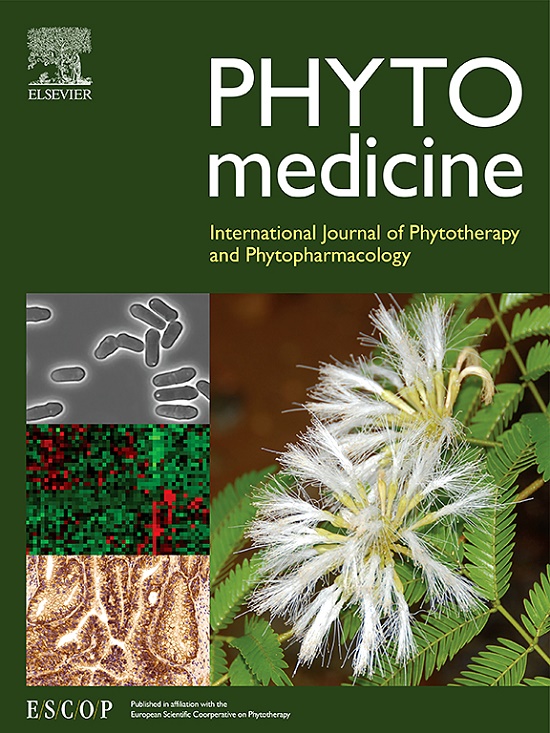Comparative chloroplast genome analyses provide new insights into molecular markers for distinguishing Arnebiae Radix and its substitutes (tribe Lithospermeae, Boraginaceae)
IF 6.7
1区 医学
Q1 CHEMISTRY, MEDICINAL
引用次数: 0
Abstract
Background
Arnebiae Radix has long been used in traditional medicine for its pleiotropic properties. However, distinguishing Arnebiae Radix from its substitutes or closely related species has been challenging due to limited phenotypic characteristics.
Purpose
We aimed to identify the molecular markers for distinguishing Arnebiae Radix from its confusion species.
Study design
Chloroplast genome sequences were used to identify the markers.
Methods
Chloroplast genomes from 15 species across five genera, including all historically used source plants, were sequenced and assembled.
Results
The results revealed significant similarities across all chloroplast genomes in terms of structure, size, gene content, repeat sequences pattens, and codon usage patterns. Phylogenetic analysis showed that the genera Lithospermum, Buglossoides, and Aegonychon formed one clade, while Arnebia guttata, Ar. decumbens, and Ar. euchroma form another. Despite most regions of the chloroplast genomes are highly conserved, three regions—petA-psbJ, ndhF-rpl32, and ycf1—exhibited high variability among difference species, providing high-resolution markers for species identification. Specifically, 376 and 325 species-specific sites were identified in Ar. euchroma and Ar. guttata, respectively. Additionally, four species-specific sites were identified as novel molecular markers, potentially aiding in distinguishing Arnebiae Radix and its confusion or substitute species.
Conclusion
This study provided new genetic insights for differentiating Arnebiae Radix and its confusion species, paving the way for further exploration of these medicinal plants.

比较叶绿体基因组分析为鉴别羊藿科及其代用物提供了新的分子标记。
背景:紫杉因其多效性而被广泛应用于传统医学中。然而,由于其有限的表型特征,从其替代品或近缘种中区分紫杉一直具有挑战性。目的:寻找鉴别紫杉及其混种的分子标记。研究设计:利用叶绿体基因组序列鉴定标记。方法:对5属15个种的叶绿体基因组进行测序和组装,包括所有历史上使用的来源植物。结果:结果揭示了所有叶绿体基因组在结构、大小、基因含量、重复序列模式和密码子使用模式方面的显著相似性。系统发育分析表明,石芋属、Buglossoides属和Aegonychon属为一个分支,Arnebia guttata属、Ar. decumbens属和Ar. euchroma属为另一个分支。尽管叶绿体基因组的大部分区域高度保守,但peta - psbj、ndhF-rpl32和ycf1这三个区域在不同物种间表现出很高的变异性,为物种鉴定提供了高分辨率的标记。其中,euchroma和arr . guttata分别鉴定出376个和325个种特异性位点。此外,还鉴定出了4个种特异性位点作为新的分子标记,可能有助于鉴别紫杉属及其混淆种或替代种。结论:本研究为鉴别紫杉属及其混种提供了新的遗传学见解,为进一步开发紫杉属药用植物奠定了基础。
本文章由计算机程序翻译,如有差异,请以英文原文为准。
求助全文
约1分钟内获得全文
求助全文
来源期刊

Phytomedicine
医学-药学
CiteScore
10.30
自引率
5.10%
发文量
670
审稿时长
91 days
期刊介绍:
Phytomedicine is a therapy-oriented journal that publishes innovative studies on the efficacy, safety, quality, and mechanisms of action of specified plant extracts, phytopharmaceuticals, and their isolated constituents. This includes clinical, pharmacological, pharmacokinetic, and toxicological studies of herbal medicinal products, preparations, and purified compounds with defined and consistent quality, ensuring reproducible pharmacological activity. Founded in 1994, Phytomedicine aims to focus and stimulate research in this field and establish internationally accepted scientific standards for pharmacological studies, proof of clinical efficacy, and safety of phytomedicines.
 求助内容:
求助内容: 应助结果提醒方式:
应助结果提醒方式:


